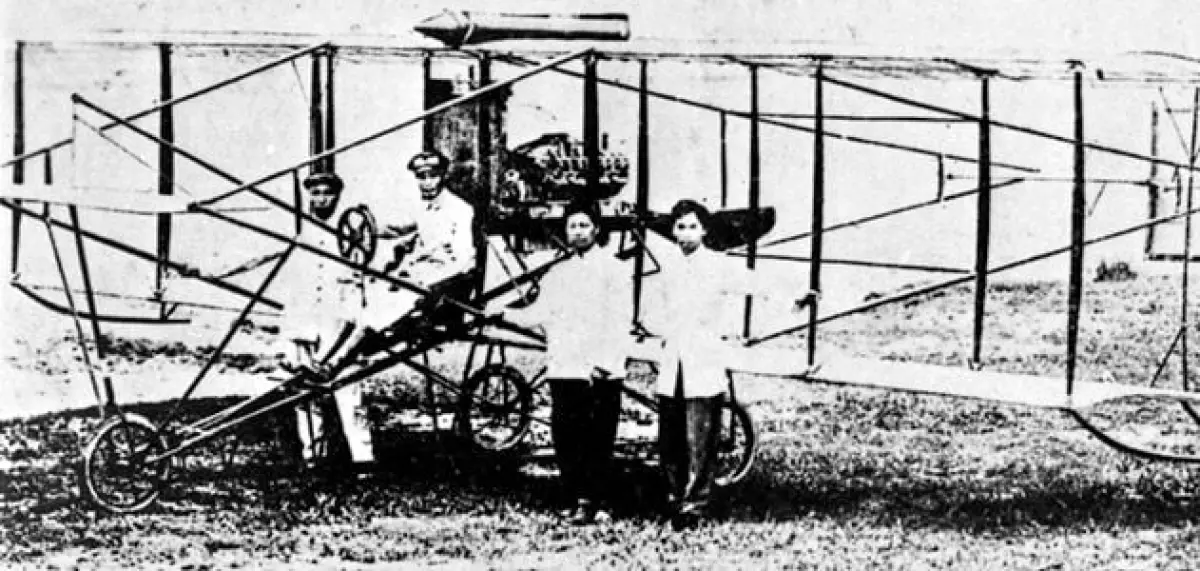 Image source: Renee Lym Robertson
Image source: Renee Lym Robertson
In the early days of aviation, while the world celebrated the achievements of the Wright brothers, another name loomed in the shadows - Feng Ru. Little known outside of China, Feng Ru's contributions to aviation rival that of the famous Wright brothers. His story is one of determination, ingenuity, and a relentless pursuit of progress.
The Beginnings
At twilight on a Tuesday evening in September 1909, Feng Ru stood on the hills of Oakland, California, preparing to test his own aircraft design. It was a time when aviation was still in its infancy, only a year after the Wright brothers had made their first public flights. With a bi-plane resembling a bird ready for takeoff, Feng took to the skies, circling the Piedmont area for an astonishing 20 minutes. Despite a mishap that bruised him but left him unharmed, Feng's flight showcased his potential as an aviation pioneer.
The Journey of a Visionary
Feng Ru's fame in China is comparable to that of the Wright brothers in the United States. China honors his legacy by naming middle and high schools after him, turning his childhood home into a museum, and recognizing his work as the foundation of their space program. But how did this visionary engineer, born in China and later immigrating to the United States, become the Father of Chinese Aviation?
Feng arrived in San Francisco as a teenager, and he was captivated by America's power and prosperity. Recognizing that industrialization played a significant role in America's success, he believed it held the same potential for China. So, with an insatiable thirst for knowledge, he immersed himself in the world of machines. Feng worked in shipyards, power plants, and machine shops, tirelessly acquiring mechanical knowledge.
The Transition to Aviation
Feng's reputation grew as he developed various inventions, including alternate versions of the water pump, the generator, the telephone, and the wireless telegraph. However, upon hearing of the Wright brothers' achievements, Feng turned his attention to aviation. He painstakingly translated any information he could find on the Wrights, Glenn Curtiss, and French aircraft designer Henri Farman into Chinese.
In 1906, Feng made the decision to establish an aircraft factory in California. Initially planning to set up in San Francisco, he was forced to relocate to Oakland after the devastating earthquake and fire. With support from local Chinese businessmen and a modest 10 by eight-foot shack as his workshop, Feng brought his dreams to life. Late nights and unwavering dedication fueled his progress.
Triumphs and Secrets
Feng's obsession with secrecy led him to great lengths to protect his invention. He had different machine shops across the East Coast create the engine castings, which he assembled himself. His efforts paid off as his successful test flights garnered attention from the mainstream press. Revolutionary leader Sun Yat-sen even praised Feng's work, acknowledging its significance.
By 1911, Feng embarked on a journey back to his homeland, armed with a biplane of his own construction. The New York Times reported on February 21: "He will leave here for his native land tomorrow, taking with him a biplane of the Curtiss type, in which he intends to make exhibition flights. It is believed that he will be the first aviator to rise from the ground in China."
Legacy and Farewell
Feng's return to China in 1911 marked a significant milestone in the country's aviation history. His dreams and ambitions aligned with the nation's desire for progress. Sadly, his life was cut short on August 26, 1912, during an aerial exhibition. Flying at 120 feet, his aircraft suffered a fatal accident due to engine failure. Feng's legacy, however, lives on.
The Republic of China honored Feng Ru with a full military funeral, posthumously granting him the rank of a major general. In accordance with Sun Yat-sen's request, Feng's tombstone bears the engraving "Chinese Aviation Pioneer."
Feng Ru's story serves as a testament to the power of determination, innovation, and the pursuit of one's dreams. Although his name might not be as widely recognized as the Wright brothers, his impact on Chinese aviation cannot be overstated. Feng Ru, the Father of Chinese Aviation, will forever be celebrated as a true pioneer.

















